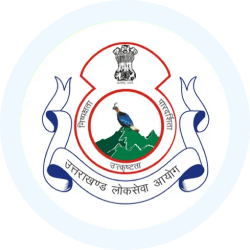UKPSC Monthly Current Affairs: January 2025 | Monthly Current Affairs UKPSC - UKPSC (Uttarakhand) PDF Download
Effective Control of Forest Fire in Uttarakhand
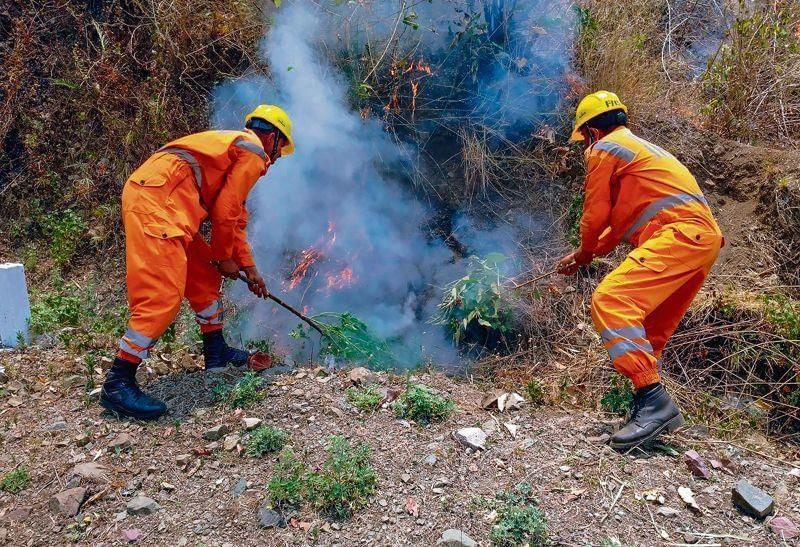
Why in News?
- Forest fires are a major concern in Uttarakhand.
- Chief Minister Pushkar Singh Dhami has directed the Chief Conservator of Forests (CCF) to take swift action in districts vulnerable to forest fires.
Key Points
Appointment of Nodal Officers for Fire Control:
- Ten senior officers from the Forest Department have been designated as nodal officers at the district level to coordinate resources and improve fire management.
- The focus will be on enhancing management, control, monitoring, cooperation, and coordination within districts.
Pre-Fire Season Preparations:
- The Uttarakhand Forest Department has ordered the appointment of nodal officers before the usual fire season to assess fire management preparations and control measures at the district level.
Community Participation in Fire Control:
- To increase community involvement in managing forest fires, the Forest Department is collaborating with local personnel, the State Environmental Authority (SEA), and Fire Management Committees.
- The goal is to implement the ‘Sheetalakhet’ model across all divisions in the state, inspired by its success in the Almora Forest Division.
Forest Fire
- A forest fire, also known as a bush or wildfire, refers to the uncontrolled burning of plants in natural areas such as forests and grasslands.
- For a forest fire to continue burning, it requires three essential elements: fuel, oxygen, and a heat source.
Infrastructure Development for the 38th National Games
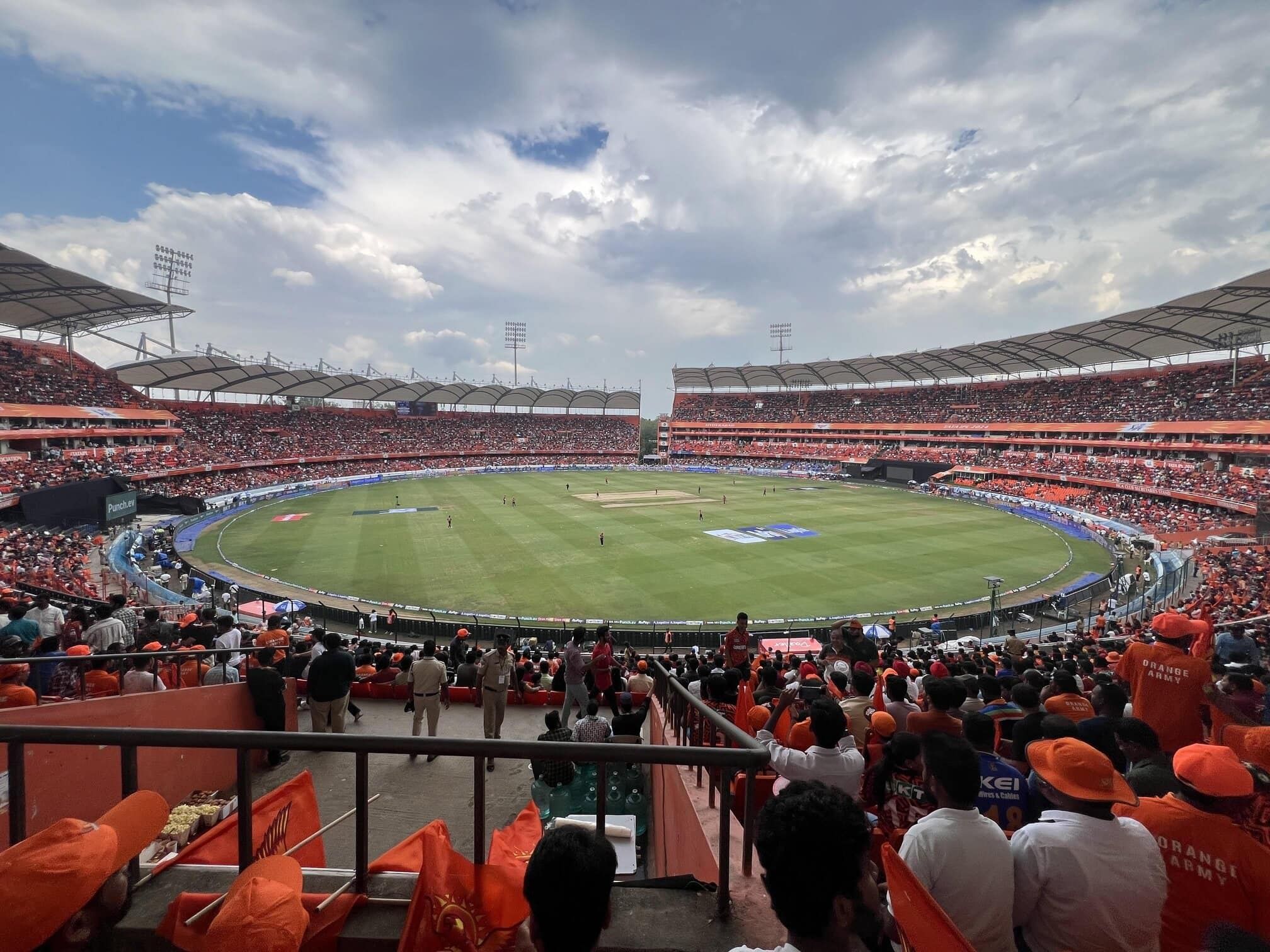 Cricket Stadium Development
Cricket Stadium Development
The roads connecting Rajiv Gandhi International Cricket Stadium in Raipur, Dehradun, will be widened to manage traffic more efficiently.
- The decision comes after severe traffic congestion during the opening ceremony of the 38th National Games.
Key Points
- Future Events Consideration: The government is committed to improving infrastructure and traffic management in anticipation of more sporting events at the stadium in the future.
- National Games Closing Ceremony: The closing ceremony is scheduled for 14 February 2025.
- National Games 2025:
- The 38th edition of the National Games, inspired by the Olympic model, showcases India’s vibrant multi-sport culture. Athletes from 28 states, eight Union Territories, and the Services Sports Control Board (SSCB) will compete in 32 different sports for medals.
- The National Games will kick off with triathlon events on 26 January.
- The overall winner will be awarded the Raja Bhalindra Singh Trophy for each edition.
- The champion state is determined by points earned from finishing positions in various events.
- Prominent athletes such as Olympic medallist Lovlina Borgohain (boxing), Swapnil Kusale, Sarabjot Singh, and Vijay Kumar (shooting) are set to participate.
Uttarakhand Introduces Uniform Civil Code (UCC) and Online Portal
Implementation of UCC in Uttarakhand
- Uttarakhand has officially implemented the Uniform Civil Code (UCC), becoming the first Indian state to do so after Independence and the second overall after Goa.
- The UCC aims to standardize civil laws for all citizens, irrespective of their religion.
Features of the UCC in Uttarakhand
- The UCC Bill, passed by the State Assembly in February 2024, prohibits practices such as halala, iddat, and talaq, which are part of Muslim Personal Law regarding marriage and divorce.
- It mandates the online registration of marriages, divorces, and live-in relationships.
- A dedicated government portal has been established for this purpose, allowing access to records, filing complaints, and uploading wills.
Registration Requirements
- To register on the UCC portal, individuals need to submit various documents, including Aadhaar cards, PAN cards, and domicile certificates.
- The online registration process involves submitting essential documents such as birth certificates, marriage certificates, divorce certificates, and spouse details. Witness Verification
- Two witnesses, either parents or local guardians, must provide testimony via live video during the registration process.
AI Translation Service
- The UCC portal features an AI-based translation service that translates content into 22 languages, including English, to ensure accessibility for all users.
Chief Minister's Support
- Chief Minister Pushkar Singh Dhami demonstrated his support for the UCC by registering his marriage on the portal and sharing the certificate on social media, showcasing the system's efficacy.
Uniform Civil Code
The Uniform Civil Code (UCC) is outlined in Article 44 of the Constitution as part of the Directive Principles of State Policy. It suggests that the government should work towards establishing a uniform civil code for all citizens in India, although its implementation is at the government's discretion.
- UCC in Goa: Goa operates under the Portuguese Civil Code of 1867, which was retained due to the Goa, Daman, and Diu Administration Act of 1962, allowing the region to keep the colonial-era civil code.
Asian Waterbird Census
Volunteers in Dehradun district, Uttarakhand, counted 5,225 birds from 117 different species during a bird counting campaign.
About the Event:
- The bird counting campaign was organised by a team of 35 participants, split into five groups.
- It aimed to monitor both domestic and migratory bird populations in the Asan Wetland.
- The teams conducted a thorough bird count at locations including Asan Lake, Asan River, and nearby protected forests.
Survey and Methodology:
- More than 150 volunteers and forest staff surveyed 23 sites following a set protocol to count waterbirds and document other bird species.
- Observers also recorded the behaviours and activities of birds in and around the marshes and wetlands.
Citizen Science Initiative:
- The Asian Waterbird Census took place simultaneously at 23 sites across Uttarakhand.
- The initiative was supported by government and non-governmental organisations (NGOs), involving various stakeholders.
Asan Conservation Reserve
- The Asan Conservation Reserve spans 444 hectares along the Asan River, reaching its confluence with the Yamuna River in Dehradun district.
- The Asan Barrage, built in 1967, caused siltation above the dam, creating habitats suitable for birds.
- Biodiversity and Species:
- The reserve is home to 330 species of birds, including the critically endangered red-headed vulture, white-rumped vulture, and Baer’s pochard.
- The site observes over 1% of the biogeographical populations of the red-crested pochard and ruddy shelduck.
- It also hosts 49 fish species, including the endangered Putitor mahseer.
Earthquake in Uttarkashi
- According to the National Center for Seismology (NCS), an earthquake of magnitude 3.5 on the Richter scale struck Uttarkashi in Uttarakhand.
- The earthquake occurred at a depth of 5 km.
- This seismic event is part of a series of earthquakes, with a previous quake of magnitude 4.8 reported earlier in Myanmar.
Uttarkashi and Seismic Sensitivity
Uttarkashi is situated in the Himalayan seismic belt, which makes it highly vulnerable to earthquakes .
The region has a history of significant earthquakes, such as :
- The Uttarkashi earthquake in 1991, which had a magnitude of 6.8.
- The Chamoli earthquake in 1999, also with a magnitude of 6.8.
Geological Factors and Vulnerability
- The seismic activity in the region is due to the collision between the Indian Plate and the Eurasian Plate.
- Factors like unregulated construction and deforestation could increase the potential for damage during significant earthquakes .
- Uttarkashi and nearby cities , including Dehradun, Nainital, and Mussoorie, are densely populated , which raises the risk during seismic events .
Earthquake
An earthquake occurs when there is a sudden release of energy beneath the Earth's crust , causing the Earth's surface to shake. This release generates seismic waves that travel through the Earth in all directions , leading to ground movement.
Key Terms Related to Earthquake
- Hypocenter: The point underground where the earthquake starts.
- Epicenter: The spot on the Earth's surface directly above the hypocenter , where the shaking is felt the strongest.
Types of Earthquakes
- Fault Zones: Earthquakes that happen because of movement along cracks in the Earth's crust.
- Tectonic Earthquakes: These are caused by the movement of large plates beneath the Earth's surface.
- Volcanic Earthquakes: These occur due to volcanic activity , usually because of magma moving under the Earth's surface.
- Human-Induced Earthquakes: These are triggered by human actions , such as mining or injecting fluids into the ground.
Scales of Measuring Earthquakes
- Magnitude Scale: This measures the energy released by an earthquake , using the Richter scale, which ranges from 0 to 10. Each number represents a tenfold increase in amplitude , indicating the earthquake's strength.
- Intensity Scale: This measures the level of shaking and damage caused by an earthquake. The Mercalli intensity scale, created by Italian seismologist Giuseppe Mercalli , ranges from 1 to 12, with higher numbers signifying more severe shaking and destruction.
UCC Regulations in Uttarakhand
Recently, the Uttarakhand government approved the guidelines for the UCC and intends to issue a gazette notification for the legislation by the end of January 2025, facilitating its implementation.
Key Provisions of UCC:
- The UCC, which was passed by the Uttarakhand Assembly in February 2024, excludes tribal communities from its purview. This exclusion requires further clarification regarding the reasons behind it.
- The UCC prohibits practices such as halala, iddat, and talaq, which are customs under Muslim Personal Law.
- The UCC guarantees equal rights for women concerning property and inheritance.
- The Code mandates the registration of marriages and divorces, with non-compliance resulting in the loss of government benefits.
- There are stringent regulations for unregistered live-in relationships, although children born from these relationships are considered legitimate.
Implementation Measures:
- The government has set up an online portal for registering marriages, divorces, inheritance rights, live-in relationships, and terminations of live-in relationships.
- Citizens can check their data and application status through mobile phones or from home.
- Common Service Centres (CSCs) have been authorized for online registration.
- In remote areas lacking internet access, CSC agents will offer door-to-door registration services.
- Registration and tracking via email and SMS have been introduced for user convenience.
- An online complaint registration system has also been established.
Kedarnath Wildlife Sanctuary
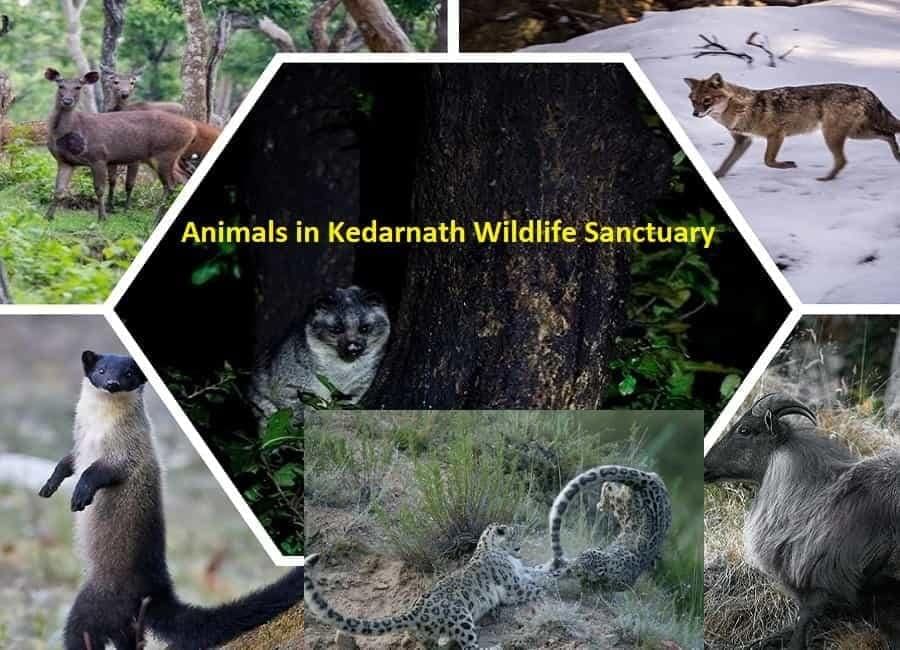 Wildlife Preservation
Wildlife Preservation
Recently, the Uttarakhand government’s proposal to allow soapstone mining on agricultural land at Pokhani, near the Kedarnath Wildlife Sanctuary, was rejected.
Wildlife Sanctuary and Endangered Species:
- Himalayan musk deer
- Himalayan tahr
- IUCN
- Red List
The Kedarnath Wildlife Sanctuary is home to endangered species like the Himalayan musk deer and Himalayan tahr, both listed on the IUCN Red List.
Eco-Sensitive Zone (ESZ) Guidelines:
- Eco-sensitive zone (ESZ)
While the exact boundaries of the sanctuary’s ESZ have not been defined, the environment ministry’s guidelines state that an area of 10 km around protected zones is regarded as an ESZ when boundaries are not specified.
Proposal for Soapstone Mining:
In 2023, Uttarakhand authorities proposed allowing soapstone mining in Pokhani, located within the ESZ of Kedarnath Wildlife Sanctuary.
Environmentalists’ Reaction:
Environmentalists welcomed the rejection as a significant step in protecting the sanctuary and its surrounding areas. They stressed that this decision showed an understanding of the risks that mining activities pose to the region’s ecology and local communities.
Concerns Over Unregulated Mining in Uttarakhand:
Rising worries about unregulated mining, especially in the Bageshwar district of Kumaon, have led to a stronger opposition against such activities.
Reports from the Uttarakhand Disaster Management Authority revealed serious damage caused by mining, including:
- Cracks in 200 houses
- Damage to roads
- Impact on agricultural fields across 11 vulnerable villages
National Board for Wildlife (NBWL)
- The National Board for Wildlife (NBWL) is a legal board created in 2003 under the Wild Life (Protection) Act, 1972.
- It took the place of the Indian Board for Wildlife, which was set up in 1952.
- The NBWL is led by the Prime Minister and focuses on the protection and development of wildlife and forests.
- This board gives advice and can only offer guidance to the Government regarding wildlife conservation policies.
- It serves as the main organization for examining all issues related to wildlife and for approving projects near national parks and sanctuaries.
- The standing committee of the NBWL is led by the Minister of Environment, Forest and Climate Change.
- This committee is responsible for approving all projects located within protected wildlife areas or within 10 kilometers of these areas.
38th National Games
Uttarakhand is gearing up to host the 38th National Games, commencing on 28th January 2025. This event is set to be the largest sporting occasion in the State’s history, featuring athletes from across India competing in 35 different sports.
To mark this significant event, Uttarakhand has introduced three key symbols:
- The logo of the National Games
- The mascot named Mauli
- The torch called Tejaswini
These symbols are a reflection of Uttarakhand’s rich cultural heritage, breathtaking landscapes, and the resilient spirit of its people. Additionally, the hosting of the National Games coincides with the 25th anniversary of Uttarakhand’s formation, adding to the significance of the event.
This sporting event is not just about competition; it is also an opportunity for Uttarakhand to showcase its unique cultural and natural identity to the rest of the country.
The Logo:
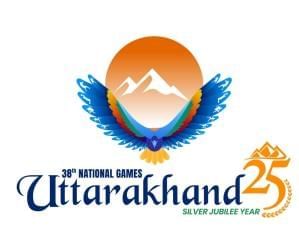
The official logo of the 38th National Games is a blend of Uttarakhand’s stunning natural beauty and its rich cultural heritage. The logo prominently features:
- The Himalayan Peaks: Symbolizing the State’s grandeur, resilience, and the majestic presence of the Himalayas.
- The Himalayan Monal: This bird represents the biodiversity of the region and is a point of cultural pride for the locals.
- The Ganga River: A sacred river, the Ganga is central to Uttarakhand’s identity, symbolizing purity, spirituality, and the cultural significance of water in Indian society.
The Mascot Mauli:
The mascot for the 38th National Games is named Mauli, after Uttarakhand’s state bird, the Himalayan Monal. This bird is known for its vibrant colours and graceful presence, making it a fitting symbol for the State. Mauli embodies the following qualities:
- Natural Beauty: The Himalayan Monal represents Uttarakhand’s pristine environment, characterized by its majestic mountains, lush forests, and diverse wildlife.
- Enduring Spirit: Just like the athletes participating in the games, Mauli reflects determination, energy, and perseverance, qualities that are essential for success in sports and in life.
- Connection with Nature: By choosing Mauli as the mascot, Uttarakhand celebrates its harmonious relationship with nature, highlighting the importance of wildlife conservation and environmental protection.
The Torch Tejaswini:
The official torch of the 38th National Games, named Tejaswini, is a symbol of power, inspiration, and the relentless pursuit of excellence. The torch represents:
- Unity: Tejaswini will carry the flame of sportsmanship and competition across Uttarakhand, uniting the State and the nation in the spirit of the games.
- Grandeur: The design of the torch reflects the grandeur of Uttarakhand’s mountains, symbolizing strength, stability, and the high aspirations of the State and its people.
- Energy: The vibrant energy of Uttarakhand’s people is mirrored in the design of the torch, representing the enthusiasm and passion for sports and excellence.
- Bright Future: The radiant light of Tejaswini symbolizes a bright future for Uttarakhand’s athletes, inspiring them to achieve greatness while fostering a sense of pride and togetherness among the people.
Himalayan Monal
- Scientific Classification: The Himalayan Monal, part of the pheasant family Phasianidae, is also known as the Impeyan monal or Impeyan pheasant.
- National Symbol: This bird is the state bird of Uttarakhand and was chosen as the mascot for the 38th National Games held in Uttarakhand in 2018.
- Wildlife Protection: Under the Wildlife (Protection) Act of 1972, the Himalayan Monal is listed as a Schedule I bird, indicating its protected status.
- Conservation Status: The bird is classified as Least Concern (LC) by the International Union for Conservation of Nature (IUCN), reflecting its stable population.
Uttarakhand's New Curriculum for Class X Students

The Uttarakhand State Council of Educational Research and Training (SCERT) has proposed a draft to make 10 subjects mandatory for Class X students, replacing the current requirement of five subjects. This initiative is in line with the National Education Policy (NEP) 2020 and aims to enhance educational standards in the state.
The new curriculum framework, the first major update since the NEP of 1986, includes subjects recommended by the NEP and introduces new topics to foster an entrepreneurial spirit among students, such as courses in beauty and wellness, drone technology, and various IT-related programmes. All children in government schools will be required to study these subjects, with the option to change subjects starting from 11th grade.
Key Points
- The State Council of Educational Research and Training (SCERT) has created a draft for the state curriculum framework to improve educational standards and prepare students better for future challenges.
- This new curriculum is the first significant update since the National Education Policy (NEP) of 1986, which followed the policy set in 1968.
- The draft curriculum was developed by various committees and will be evaluated by the state government.
- It includes only the subjects that have been recommended by the NEP.
- All children in government schools will need to study these subjects.
- From 11th grade onwards, students will have the option to switch subjects.
- The addition of new subjects under this policy aims to encourage an entrepreneurial spirit among students.
- These subjects will cover areas such as beauty and wellness, drone technology, and various IT-related programs.
National Education Policy, 2020
- About: The NEP 2020 aims to make India a strong player in global knowledge. This is the third major change to India's education system since the country gained independence.
- The previous two education policies were introduced in 1968 and 1986.
- Key Features:
- Ensuring universal access to education at all levels, from pre-primary to Grade 12.
- Providing quality early childhood care and education for children aged 3 to 6 years.
- Introducing a new Curricular and Pedagogical Structure(5-3-3-4) that aligns with age groups:
- 3-8 years: Foundational Stage (5 years)
- 8-11 years: Preparatory Stage (3 years)
- 11-14 years: Middle Stage (3 years)
- 14-18 years: Secondary Stage (4 years)
- Removing strict divisions between arts and sciences, as well as between curricular and extra-curricular activities, and between vocational and academic paths.
- Focusing on encouraging multilingualism and promoting Indian languages.
- Establishing a new National Assessment Centre called PARAKH which stands for Performance Assessment, Review, and Analysis of Knowledge for Holistic Development.
- Creating a separate Gender Inclusion Fund and Special Education Zones for underprivileged areas and groups.
Uttarakhand's Implementation of the Uniform Civil Code with Strict Registration Guidelines
The government of Uttarakhand is preparing to launch new mandatory registration requirements for various personal and civil matters, set to take effect on January 26, 2025.
UCC Portal
The UCC Portal will facilitate the registration of various personal and civil matters, ensuring a streamlined and transparent process. The portal will offer services such as:
- Registration of marriages, divorces, and live-in relationships.
- Termination of live-in relationships.
- Intestate succession and legal heir declaration.
- Testamentary successions.
- Complaint registration and appeals for rejected applications.
Detailed Requirements for Personal and Civil Matters
- Live-in Relationship Registration:
- All live-in couples, whether newly formed or existing, are required to register their relationship.
- Applicants must provide essential information, including proof of age, nationality, religion, phone number, and previous relationship status.
- Both partners need to submit photographs and declarations.
- Children born into such relationships must be registered promptly upon birth.
Marriage and Divorce Registration
- The UCC portal establishes stringent requirements for the registration of marriages and divorces to promote transparency and accountability.
Testamentary Succession
- Individuals making declarations must provide Aadhaar-linked information for themselves, their heirs, and witnesses.
- Witnesses are obligated to upload video recordings of themselves reading the succession declaration to prevent forgery or disputes.
Complaint Mechanism for Marriages and Relationships
- Third parties can file objections to a marriage or live-in relationship by submitting a complaint through the UCC portal.
- A sub-registrar will verify these complaints to address any false allegations.
The Uniform Civil Code (UCC) aims to establish a single set of laws governing personal matters such as marriage, divorce, adoption, inheritance, and succession for all citizens of India, ensuring uniformity and equality.
UCC in the Indian Constitution
The concept of the UCC is enshrined in Article 44 of the Indian Constitution, which encourages the state to work towards implementing a uniform civil code for all citizens. However, it is important to note that this principle is not legally enforceable but serves as a guiding framework for the state.
Uttarakhand Government Exempts Solar Entrepreneurs from GST Registration

Solar Energy Initiative
The Uttarakhand government has announced a significant relief measure for solar entrepreneurs by exempting them from the mandatory registration under the Goods and Services Tax (GST) system. This decision aims to simplify processes and encourage investments in solar projects across the state.
- Director General of Industries and Managing Director of SIDCUL (State Industrial Development Corporation of Uttarakhand Limited) announced this decision at the Pravasi Sammelan (Diaspora Conference).
- The exemption was introduced to address the long-standing requests from solar project investors who had been experiencing delays due to GST registration requirements.
- Under the Mukhyamantri Saur Swarojgar Yojana, thousands of solar plants have already been set up, with many more currently underway.
- Previously, entrepreneurs needed to register for GST to receive subsidies, even though solar energy itself is exempt from GST.
- This new policy removes that requirement, making the process easier and reducing bureaucratic challenges for solar project developers.
- The decision showcases the Uttarakhand Government’s dedication to promoting renewable energy and supporting sustainable development.
- By streamlining the investment process, the government aims to attract more entrepreneurs into the solar energy field, which will support both economic growth and environmental protection.
Mukhyamantri Solar Swarozgar Yojana
- In 2020, Uttarakhand introduced the Mukhya Mantri Saur Swarojgar Yojana to encourage self-employment through solar energy farming.
- The goal of this scheme is to boost the creation of green energy and offer self-employment chances to the youth of Uttarakhand, as well as to those who have returned from other places.
- Each person who benefits from this scheme will receive solar plants with a capacity of 25 kilowatts.
Inauguration of the 38th National Games by the Prime Minister
The Prime Minister is scheduled to inaugurate the 38th National Games, which will be held from January 28 to February 14, 2025, in Uttarakhand.
National Games
- The Indian Olympic Association (IOA) has chosen Uttarakhand as the host state for the 2025 National Games.
- Over 10,000 participants, including athletes, officials, and coaches, will compete in 38 different sports across various cities in Uttarakhand.
Significance of the Event
- P.T. Usha, the President of the IOA, emphasized the importance of the 38th National Games in promoting both traditional and contemporary sports in India.
- The event will feature demonstration sports such as kalarippayattu, yogasana, and rafting, showcasing India’s rich cultural heritage and providing a platform for emerging athletes.
About the National Games
- The National Games is a prestigious multi-sport event where athletes from various states and Union Territories compete for medals.
- The upcoming edition in 2025 will include 32 core sporting disciplines along with four demonstration events.
Previous National Games
- The 2023 National Games were held in Goa, spanning five cities: Mapusa, Margao, Panjim, Ponda, and Vasco.
- Maharashtra topped the medal tally with 228 medals, including 80 gold medals.
- The 2022 edition in Gujarat marked the revival of the National Games after a seven-year hiatus since 2015.
Kalaripayattu
- Kalaripayattu is an ancient martial art form that focuses on the knowledge of the human body.
- It originated in Kerala between the 3rd century BC and the 2nd century AD and is still practiced in Kerala and parts of Tamil Nadu.
- The training ground for Kalaripayattu is called a 'Kalari,' which means gymnasium in Malayalam, but it also refers to a battlefield.
- Kalaripayattu is considered one of the oldest fighting systems and is often regarded as the precursor to modern Kung Fu.
Mallakhamb
- Mallakhamb is a traditional sport where gymnasts perform aerial yoga or gymnastic postures using a vertical pole, cane, or rope.
- The name Mallakhamb is derived from the words malla, meaning wrestler, and khamb, meaning pole, indicating its historical significance in wrestling training.
- This sport has its origins in Madhya Pradesh and Maharashtra.
Soapstone Mining in Uttarakhand
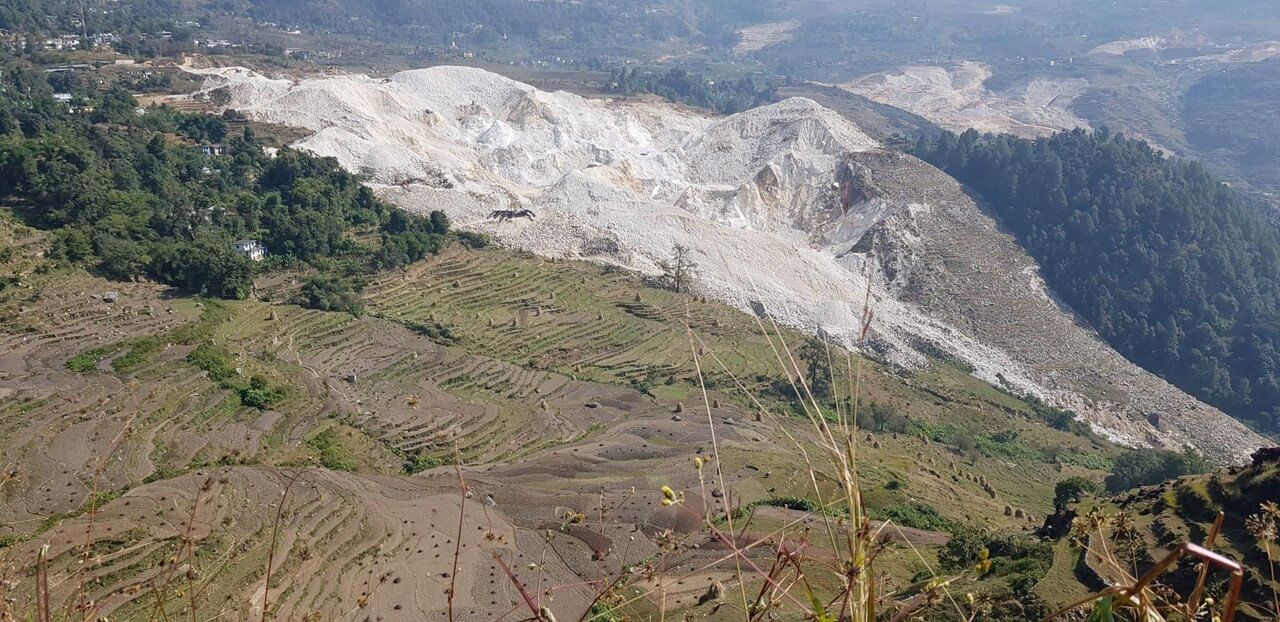 Soapstone Mining Issues
Soapstone Mining Issues
Recently, the Uttarakhand government took action and criticised the authorities for failing to regulate mining in the Bageshwar district of Uttarakhand.
Environmental Concerns:
- Land Subsidence: This is a major concern in Uttarakhand, worsened by mining in sensitive areas like Kanda-Kanyal in Bageshwar.
- Soil Erosion: Mining operations and resource extraction contribute significantly to soil erosion.
- Slope Instability: Mining on lower slopes weakens the ground, impacting villages situated on higher ground.
- Loamy and loose soil makes these areas more prone to erosion, especially during the monsoon season.
- Deficient Safety Measures: lack of green belts, retaining walls, buffer zones, slope monitoring, and protective structures accelerates erosion.
- Water and Air Pollution: Mining activities result in water scarcity, contamination, and air pollution in the area.
Cultural Concerns:
- Impact on Traditional Architecture: Land subsidence has damaged Kumaoni Bakhli houses, which were historically known for their seismic resilience.
- Damage to Heritage: Cracks in the floor of the Kalika Temple in Kanda, a significant 10th-century cultural site, indicate mining-related damage.
- The region's cultural practices, like folk music, dance, and handicrafts, are also being affected.
Administrative Lapses:
- The State and Union governments have failed to define “semi-mechanised mining,” yet they granted environmental clearances for such activities.
- The use of heavy equipment without clear policy limits has worsened the situation.
Soapstone
Soapstone is a soft metamorphic rock made up of talc, with varying amounts of chlorite, dolomite, and magnesite.
Uses:
- Soapstone is commonly used in industries for making sculptures, countertops, sinks, and tiles due to its durability and aesthetic appeal.
- It is also utilised in stoves, fireplaces, and laboratory countertops because of its excellent heat resistance.
- Ground soapstone is used as a filler in paper, cosmetics, and paints.
- Additionally, it is used for making utensils, handicrafts, and idols.
Availability in India:
- According to the Indian Bureau of Mines, Rajasthan (57%) and Uttarakhand (25%) hold significant soapstone reserves.
- Rajasthan: The largest producer, especially in the Udaipur, Dungarpur, and Bhilwara regions.
- Uttarakhand: Notable deposits are found in Bageshwar, Pithoragarh, and Almora districts.
- Tamil Nadu and Karnataka: Smaller reserves also exist in these states.
Landslide Dams in Uttarakhand
- A recent study conducted by IIT Roorkee has determined that the Alaknanda River, which flows through the Garhwal region, is the most at risk of creating natural dams due to landslides.
- This study is titled ‘Landslide Dam Studies in Uttarakhand, India: Past, Present, and Future’ and has been published by Springer.
- The research indicates that the Alaknanda is more susceptible to such landslide-induced dams than other rivers.
- Following the Alaknanda, the Mandakini, Dhauliganga, and Bhagirathi rivers also show significant vulnerability to landslide-related dam formations.
Findings of the Study:
Uttarakhand’s Terrain:
- The narrow valleys and gorges of Uttarakhand make it highly susceptible to landslide-induced natural dams, which can obstruct rivers and create lakes upstream.
Landslide lake outburst floods (LLOFs)
- These blockages pose a significant threat of landslide lake outburst floods (LLOFs), which can have catastrophic consequences.
Most Affected Areas:
- Chamoli, Rudraprayag, and Uttarkashi are the regions most severely impacted by landslide dams.
- The Gohna Tal breach in Chamoli is the most devastating landslide dam incident, affecting areas downstream as far as Haridwar.
Historical Context of Landslide Dams:
- The formation of landslide dams in Uttarakhand dates back to the Last Glacial Maximum (LGM), which occurred between 29,000 and 19,000 years ago.
- Significant landslide dam events have been recorded since the 19th century, with the Gohna Lake breach in 1970 being the most notable, having lasting impacts.
Current Trends and Concerns:
- The study indicates that August is the peak month for landslide dam occurrences, coinciding with the monsoon season.
- Factors such as climate change, hydropower projects, road construction, and deforestation have increased the frequency of these events in recent years.
Risk Mitigation and Preparedness:
- Although there have been fewer major incidents since 2018, the study emphasizes the need for preparedness to mitigate future risks.
- Effective disaster management is crucial, as the instability of landslide dams in narrow valleys presents significant challenges for managing such disasters.
Key Triggers of Landslides:
- Heavy rainfall and cloudbursts are primary triggers for landslides.
- Debris slides are the most common type of landslide causing river blockages in Uttarakhand’s mountainous regions.
Alaknanda River
- One of the Ganges' headstreams.
- Rises at the junction of the Satopanth and Bhagirath glaciers in Uttarakhand.
- Joins the Bhagirathi River at Devprayag, becoming the Ganges.
- Main tributaries: Mandakini, Nandakini, and Pindar rivers.
- Drains parts of Chamoli, Tehri, and Pauri districts.
Badrinath
- Hindu pilgrimage site of Badrinath and natural spring Tapt Kund are along the Alaknanda River.
- Turbulent Himalayan river in Uttarakhand and one of the Ganges’ headstreams.
Gangotri Glacier
- Bhagirathi River rises at the Gangotri Glacier base, at Gaumukh, elevation 3892m.
- Spreads into 350 km wide Ganges delta, emptying into Bay of Bengal.
- Bhagirathi and Alaknanda join at Devprayag, referred to as the Ganges.
- Originates from Vasudhara Tal, possibly Uttarakhand’s largest glacial lake.
Dhauliganga:
- Important tributary of the Alaknanda, along with Nandakini, Pindar, Mandakini, and Bhagirathi rivers.
- Joined by the Rishiganga river at Raini.
Invitation to the Prime Minister for National Games in Uttarakhand
The Chief Minister of Uttarakhand has extended an invitation to the Prime Minister to attend the National Games, which will be hosted in the state from January 28 to February 14, 2025. This is the first time Uttarakhand will be hosting this prestigious event.
Gifts for the Prime Minister
- During the meeting, the Chief Minister presented the Prime Minister with a shawl made by artisans from Malari village in the Chamoli district.
- A replica of Narayan Ashram was also gifted to the Prime Minister.
Update on Development Projects
- The Chief Minister briefed the Prime Minister on ongoing development projects in Uttarakhand.
- He mentioned the rapid progress of the Rishikesh-Karnprayag rail line project’s first phase.
- The completion of the survey for the Tanakpur-Bageshwar rail project was also highlighted.
Jal Jeevan Mission Progress
- The Prime Minister was informed about the advancements in the Jal Jeevan Mission in Uttarakhand.
- A proposal was made to close the old Rishikesh railway station and shift all train operations to the new Yoga Nagari railway station.
- It was suggested to repurpose the land of the old station for a new road system to improve traffic flow.
Rishikesh as an Iconic City
- The Chief Minister expressed appreciation for Rishikesh being selected as an iconic city for river rafting.
- He requested the Centre’s support for the Haridwar-Rishikesh Ganga Corridor and the Sharda Corridor project due to the state’s limited resources.
Geothermal Energy Initiative
- A Memorandum of Understanding (MoU) with the Iceland Embassy is proposed to explore geothermal energy potential in Uttarakhand.
- The Chief Minister confirmed receiving necessary no-objection letters from various ministries, including Environment, Forest and Climate Change, New and Renewable Energy, and External Affairs.
- He also sought technical and financial support for this initiative to help Uttarakhand achieve its zero carbon emission goal by 2070.
Road Transport Development Proposals
- The Chief Minister requested approval for several road transport proposals submitted to the Ministry of Road Transport, including:
- Rishikesh Bypass
- Haridwar Bypass (Package 2)
- Dehradun-Mussoorie Connectivity
- Dehradun Ring Road
- Champawat Bypass
- Lalkuan, Haldwani, and Kathgodam Bypass
- Manaskhand Project
National Games
Background of National Games:
- The National Games are part of the Olympic movement in India, which began gaining attention in the 1920s.
- The first National Games were held in Lahore in 1924, featuring athletes from different regions of India competing in various sports.
- The Indian Olympic Games were officially renamed National Games in 1940.
Objectives of National Games:
- The National Games aim to benefit Indian athletes, sports organizations, and related entities by providing a platform for competition.
- They also raise awareness among states and Union Territories about the need for internationally standard sports infrastructure.
- The games encourage youth participation in sports and promote a sports culture among individuals from all backgrounds.
- Educating the public on the importance of sports for building a healthy society is also a key objective.
Jurisdiction of National Games:
- The Indian Olympic Association fully governs the duration and regulations of the National Games.
Inspection of the Dehradun-Mussoorie Trek by CM Dhami
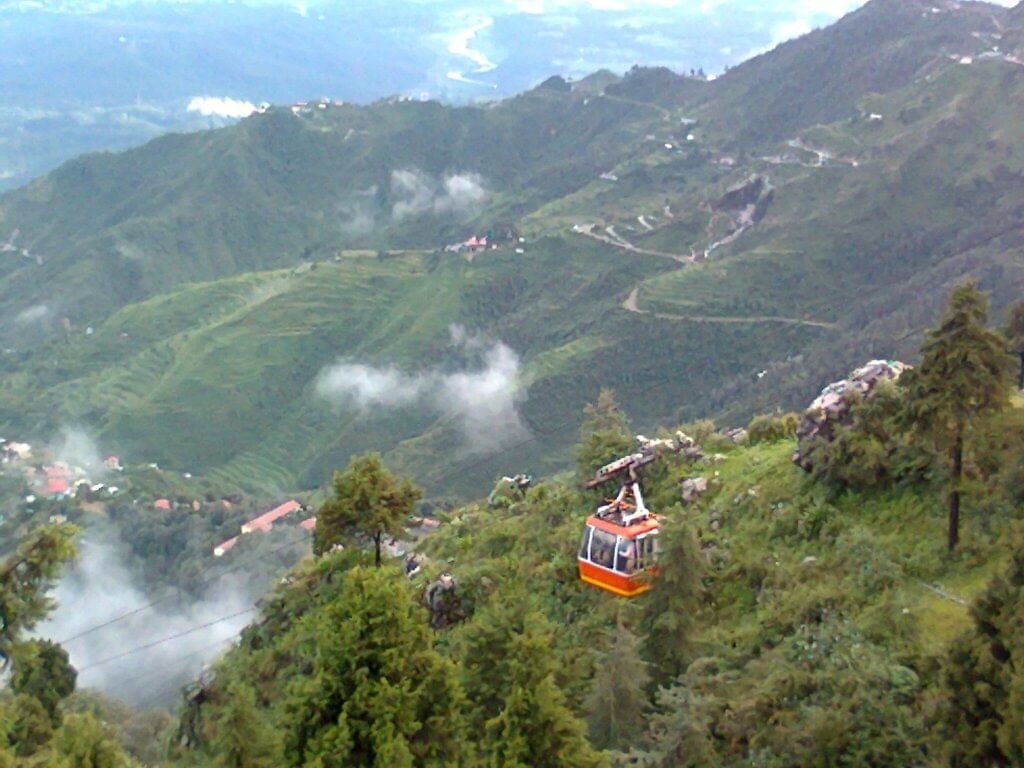 Trekking Improvements
Trekking Improvements
Recently, Uttarakhand Chief Minister Pushkar Singh Dhami examined the historic Dehradun-Mussoorie trek, emphasizing the need for improved amenities and safety measures for trekkers and tourists.
During his trek along the Shahanshahi Ashram to Jhadipani route, CM Dhami stressed the importance of preserving Uttarakhand's natural beauty while enhancing facilities along the trekking trails.
Role of the Mussoorie-Dehradun Development Authority (MDDA)
- CM Dhami instructed the MDDA to oversee the necessary improvements to the trekking paths, ensuring they remain attractive and well-maintained.
- He highlighted the need for better signage and railings to effectively guide trekkers along the routes.
- The Chief Minister assured that similar upgrades would be implemented on other trekking routes across the state, aiming to enhance visitor experiences while showcasing Uttarakhand's cultural heritage and natural beauty.
The MDDA, established in 1984 under the UP Urban Planning and Development Act of 1973, is responsible for managing urban planning and development in Dehradun and Mussoorie.
Its focus is on keeping pace with the rapidly growing population and providing the necessary infrastructure to accommodate this growth.
Key Focus Areas of MDDA
- Developing quality infrastructure
- Addressing housing needs of the underprivileged
- Planning Dehradun and Mussoorie in a structured and sustainable manner
To help the city meet modern urban standards, MDDA undertakes various initiatives, including:
- Implementation of the Master Plan
- Acquisition of land for various development schemes
- Enforcement of development plans and schemes
- Adaptation of measures for the protection of the natural environment in the development area
Rampant Construction Threatens Uttarakhand’s Foothill Ecosystem
Ecological Degradation and Biodiversity Loss in Uttarakhand:
- Concerns: Significant worries about ecological degradation and loss of biodiversity in Uttarakhand.
- Impact of Real Estate Expansion: Rapid real estate expansion in Dehradun raises alarms about its environmental impact and the potential displacement of communities.
- Encroachment in Rajpur and Mussoorie Road: Large residential projects in Rajpur and Mussoorie Road are encroaching on both private and public lands. This encroachment leads to the clearing of green areas and poses risks to public safety.
- Importance of Natural Drains and Rispana River: Natural drains and the Rispana river are vital for maintaining the ecological balance of the area. However, construction activities are threatening these crucial water bodies.
- Loss of Biodiversity: Construction is clearing forest land and private plots, including areas with native vegetation, resulting in a significant loss of biodiversity. Ravines are being filled with mud, which gets washed away during rainfall, further disrupting the ecological balance.
- Disruption of Local Biodiversity: The removal of native trees disrupts local biodiversity, and the pace of development is exceeding the area’s carrying capacity. Unchecked construction has led to the loss of water sources and streams in the Rajpur ridge area, with natural vegetation being replaced by urban development.
- Need for Sustainable Urban Planning: The situation underscores the urgent need for sustainable urban planning that balances development with environmental preservation. Uncontrolled construction in higher areas often leads to debris slides and flooding in low-lying regions, posing risks to residents and the environment.
- Importance of Regulation and Community Involvement: Experts emphasize the need for enforcing building regulations, conducting Environmental Impact Assessments (EIA), and promoting responsible construction practices. Public awareness and community involvement are crucial in advocating for sustainable development that preserves the ecological integrity of Uttarakhand’s foothill regions.
Understanding Environmental Impact Assessment (EIA):
- Definition: EIA is a structured approach used to analyze and comprehend the potential environmental impacts of proposed projects or activities. It aims to evaluate and foresee how these projects might affect the natural environment before their implementation.
- Historical Context: The concept of EIA emerged in the 1960s and 1970s in response to growing concerns about the environmental repercussions of large-scale development projects.
- Milestones: The first EIA notification in India was issued on January 27, 1994, by the Union Ministry of Environment and Forests. The United Nations Conference on the Human Environment in Stockholm in 1972 was a pivotal moment, emphasizing the need for environmental assessment in decision-making processes.
- International Agreements: Agreements like the United Nations Framework Convention on Climate Change (UNFCCC) and the Convention on Biological Diversity (CBD) highlight the importance of considering environmental impacts across various sectors.
FAQs on UKPSC Monthly Current Affairs: January 2025 - Monthly Current Affairs UKPSC - UKPSC (Uttarakhand)
| 1. What are the key components of the UKPSC monthly current affairs? |  |
| 2. How can candidates effectively study for current affairs in preparation for the UKPSC exam? |  |
| 3. Why is it important to stay updated with current affairs for competitive exams like UKPSC? |  |
| 4. What sources are recommended for gathering current affairs information for UKPSC preparation? |  |
| 5. How frequently should candidates revise current affairs to ensure effective preparation for the UKPSC exam? |  |




